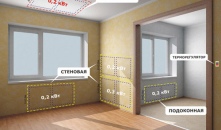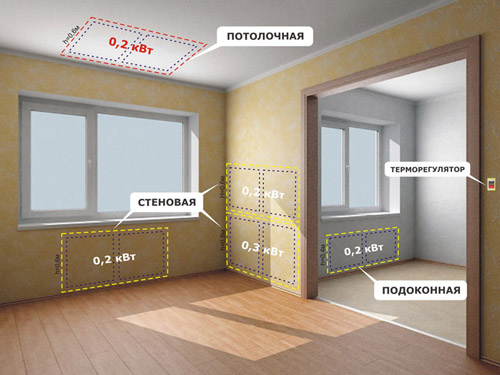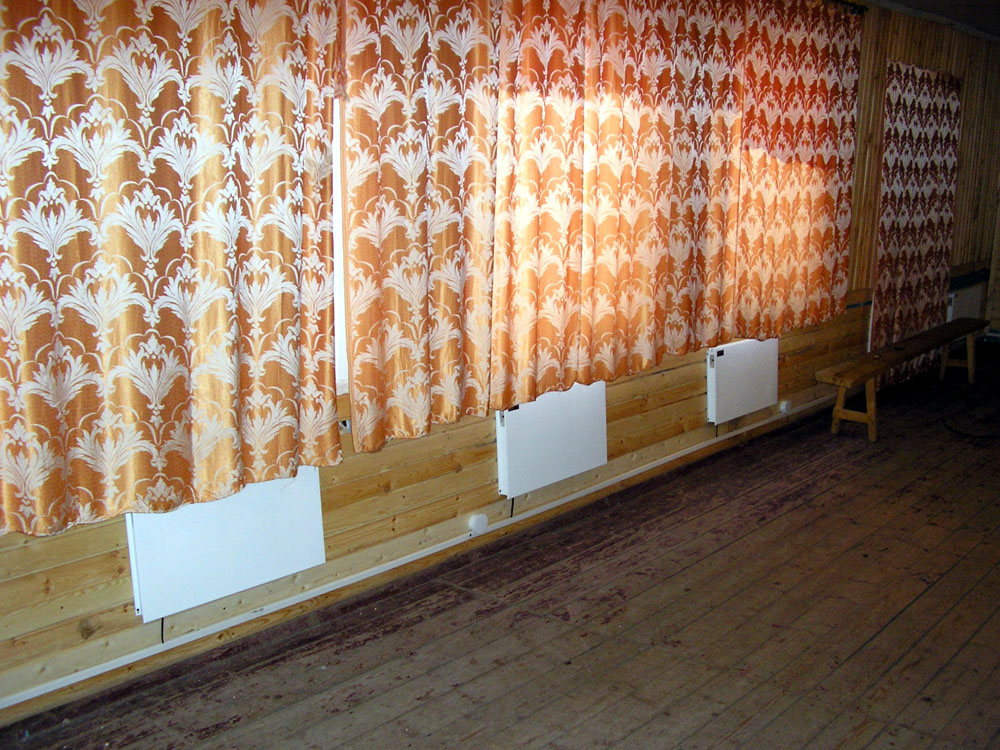Features of infrared heating

Modern home heating method
Modern technologies daily allow us to live comfortably, be sociable, learn more information in a very short time and simply improve our lives in all areas accessible to us. Today, our houses and apartments have already moved very far ahead from those that were 100 or even 50 years ago. Not only materials, design, and technology have changed, but also such vital systems as water supply, gas supply, sewage, and, of course, heating systems. At the moment, there are a large number of different design, method of operation, the working environment of heating systems used. Some of them cope better with the tasks, some of them are not very popular anymore. This is easy to explain, because most heating devices work on the principle of initial heating of the air in the rooms, which requires a lot of time and energy, because the air easily leaves through the cracks, and warm air masses accumulate more in the upper part of the rooms, which also does not give the desired effect. However, thanks to innovative developments, a new method was created for heating apartments and houses of any size and layout.
Infrared heating
Infrared heating is a new, but already such a popular method of heating homes. Reasonable prices, compactness, stylish design and quick installation allow different types of infrared heaters to win the sympathy of people who prefer not only high-quality and fast heating, but also comfort in use. Using thermostats, infrared heaters are easily configured and allow you to set your microclimate in each individual room and throughout the house. Experts note that infrared heating can serve as both the main and additional heating method, and it is also used in residential, non-residential and even industrial premises.
Infrared heaters

There are several types of infrared heaters - these can be wall panels, which are often mounted in place of conventional batteries, mobile heaters on stands and tripods, ceiling infrared panels, and even “warm floors”.
Infrared panels for walls can be ceramic, combine infrared and convection types of heat transfer. It is worth noting that in wall IR panels, radiation is divided according to the following proportion: 70% is the convective component and only 30% of infrared radiation. For simplicity, we neglect the efficiency of the heater. An energy-saving coating allows you to accumulate heat without significant energy costs. To prevent leakage of heated air masses, such infrared panels are often placed under window sills.

Wheeled heaters are more mobile and are great for cottages where you do not need to constantly maintain heat or to install additional heating in a certain area.
Ceiling infrared panels are increasingly being used, which, like wall ones, are suitable for long-term use. It is noted that such heaters will last you up to 30 years with proper handling. It should be noted that almost all consumed electricity is converted to infrared radiation in ceiling IR heaters.
If we talk about the heat distribution of ceiling heaters, then 90% of the radiation is the infrared component and only 10% convection.
Ceiling long-wave infrared heaters have favorable properties for the human body. No wonder they say that nature has already come up with the best for us, because infrared radiation is similar in nature to the sun's rays and does not lead to the burning of air in the room. That is why infrared heaters are safe and also effective, since initially they heat up not air, but furniture, floors, walls. Such a heating method is advantageous for creating special temperature conditions where necessary.
The various characteristics of infrared panels allow their use in rooms that are completely different in size. Long-wave infrared heaters can even be used on farms and greenhouses, in industrial areas, in country houses, since they cope with the necessary functions better than others, do not emit unpleasant noises, smells and do not leave combustion products.
Thus, infrared heating is by far the most profitable and progressive in various fields of application.
